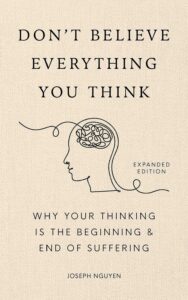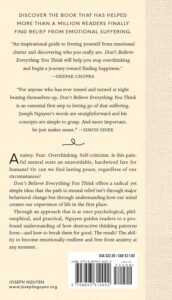In our fast-paced, always-connected world, anxiety has become an unwelcome companion for millions. That flutter in your chest, the racing thoughts, the overwhelming sense of dread – these sensations can hijack your day without warning. While medication has its place in treating clinical anxiety, many people are searching for natural approaches to complement their treatment or manage milder forms of anxiety.
As someone who has navigated the choppy waters of anxiety for years, I’ve discovered that the most powerful tools are often the simplest ones – approaches that work with our body’s natural mechanisms rather than against them. In this guide, I’ll share evidence-based natural strategies that can help you regain your center when anxiety threatens to pull you off balance.

Understanding Anxiety
Before diving into solutions, it helps to understand what’s happening in your body during anxiety. That racing heart, those sweaty palms, the shallow breathing – they’re all part of your body’s evolutionary “fight-or-flight” response, designed to protect you from threats. The problem isn’t the response itself but its activation in situations where there’s no actual danger.
When anxiety strikes, your amygdala (the brain’s emotional processing center) sounds the alarm, triggering a cascade of stress hormones including adrenaline and cortisol. These hormones prepare your body for immediate action – useful when facing a predator thousands of years ago, but less helpful when you’re about to give a presentation or stuck in traffic.
The natural approaches below work by either calming this overactive alarm system or strengthening your body’s relaxation response. Let’s explore them in detail.
Breathwork
The beauty of breathwork lies in its simplicity and immediate accessibility – your breath is always with you, making it a powerful first-line defense against anxiety.
Deep Diaphragmatic Breathing
When anxiety kicks in, our breathing becomes shallow and rapid, which ironically sends signals to the brain that danger is present, intensifying the stress response. Diaphragmatic breathing interrupts this cycle.
How to practice it:
- Find a comfortable seated position or lie down
- Place one hand on your chest and the other on your abdomen
- Inhale slowly through your nose for 4 counts, focusing on expanding your abdomen rather than your chest
- Hold briefly
- Exhale slowly through your mouth for 6 counts
- Repeat for 5-10 minutes
Research published in the Journal of Neurophysiology shows that deep breathing activates the parasympathetic nervous system – your body’s “rest and digest” mode – which directly counteracts anxiety’s “fight or flight” state.
The 4-7-8 Breathing Technique
Developed by Dr. Andrew Weil, this technique acts as a natural tranquilizer for the nervous system.
How to practice it:
- Empty your lungs completely
- Inhale quietly through your nose for 4 seconds
- Hold your breath for 7 seconds
- Exhale forcefully through your mouth for 8 seconds, making a “whoosh” sound
- Repeat the cycle up to four times
Practicing this technique twice daily can help reset your stress response baseline, making you more resilient to anxiety triggers throughout the day.
Box Breathing
Used by Navy SEALs to remain calm in high-pressure situations, box breathing is particularly effective during acute anxiety episodes.
How to practice it:
- Inhale for 4 counts
- Hold for 4 counts
- Exhale for 4 counts
- Hold for 4 counts
- Repeat for at least 5 cycles
The structured rhythm gives your racing mind something concrete to focus on, while the measured breathing helps regulate your autonomic nervous system.
Physical Activity
Exercise isn’t just about physical fitness – it’s one of the most potent and underutilized anxiety treatments available.
The Science Behind Exercise and Anxiety
When you exercise, your body releases endorphins – natural painkillers that also elevate mood. Additionally, physical activity increases body temperature and reduces muscle tension, both of which contribute to decreased anxiety. Perhaps most importantly, regular exercise appears to actually remodel the brain, enhancing areas that regulate emotions and fear responses while making them more resilient to stress.
Research published in JAMA Psychiatry found that regular exercise can be as effective as medication for treating anxiety disorders in some individuals. The anxiety-relieving effects aren’t just temporary, either – studies show consistent exercise creates lasting changes in brain structure and chemistry that build resilience against future anxiety.
Finding Your Movement Match
The best exercise for anxiety is the one you’ll actually do consistently. Here are some particularly effective options:
Rhythmic Cardio Activities
Walking, running, cycling, or swimming engage you in repetitive movements that create a meditative state while burning off stress hormones. Aim for 30 minutes most days of the week, but remember that even 10-minute sessions produce benefits.
Yoga
Combining physical postures with breath control, yoga directly counteracts many physical symptoms of anxiety. A meta-analysis published in the Journal of Alternative and Complementary Medicine found that yoga practice significantly reduces anxiety scores compared to control groups.
Try this simple yoga sequence for anxiety relief:
- Child’s pose – 1 minute
- Cat-cow stretches – 10 cycles
- Downward dog – 5 breaths
- Standing forward fold – 5 breaths
- Legs up the wall – 5 minutes
Tai Chi and Qigong
These ancient mind-body practices involve slow, flowing movements coordinated with breath. Research in BMC Psychiatry shows they effectively reduce anxiety by improving body awareness and promoting parasympathetic activation.
Dance
Moving freely to music combines the physical benefits of exercise with the emotional expression and joy that naturally counteract anxiety. Plus, focusing on learning dance steps engages your mind, creating a state of flow that interrupts anxious thought patterns.
Making Movement Sustainable
The key is consistency, not intensity. Schedule movement as non-negotiable self-care rather than something you’ll do “if you have time.” Even five minutes of movement is infinitely better than none. Consider “movement snacks” throughout your day – brief stretching sessions, quick walks, or dance breaks between tasks.
Nutrition's Role in Anxiety Management
What you eat directly impacts your brain chemistry and can either fuel anxiety or help manage it. While no single food cures anxiety, your overall dietary pattern significantly influences your resilience to stress.
Foods That May Increase Anxiety
Caffeine: Acts as a stimulant, potentially triggering or worsening anxiety symptoms by increasing heart rate, blood pressure, and cortisol release. Consider gradually reducing consumption or switching to green tea, which contains L-theanine – an amino acid that promotes calm alertness.
Alcohol: Though initially relaxing, alcohol disrupts sleep architecture and alters neurotransmitter balance, often worsening anxiety after its initial effects wear off.
Refined sugars and simple carbohydrates: Cause blood sugar spikes and crashes that can mimic or trigger anxiety symptoms. A study in the American Journal of Psychiatry found that a diet high in refined carbohydrates was associated with increased risk of anxiety and depression.
Processed foods: Often contain artificial additives, preservatives, and trans fats that may promote inflammation, potentially affecting brain function and mood regulation.
Anxiety-Calming Nutrition Strategies
Emphasize complex carbohydrates: Foods like oats, quinoa, sweet potatoes, and legumes help stabilize blood sugar and increase serotonin production – your brain’s natural mood regulator.
Incorporate omega-3 fatty acids: Found in fatty fish, walnuts, flaxseeds, and chia seeds, these essential fats are crucial for brain health and may help reduce inflammation and anxiety. A meta-analysis in JAMA Network Open found that omega-3 supplementation significantly reduced anxiety symptoms.
Prioritize magnesium-rich foods: Dark chocolate, avocados, nuts, seeds, and leafy greens contain magnesium – a mineral that plays a key role in regulating the body’s stress response system.
Include probiotic and prebiotic foods: Emerging research on the gut-brain axis suggests that maintaining a healthy gut microbiome with fermented foods (yogurt, kefir, sauerkraut, kimchi) and prebiotic-rich foods (garlic, onions, asparagus, bananas) may positively influence anxiety levels.
Hydrate adequately: Even mild dehydration can affect mood and cognitive function. Aim for roughly 2-3 liters of water daily, adjusting for activity level and climate.
Sample Anti-Anxiety Meal Plan:
- Breakfast: Steel-cut oatmeal with walnuts, ground flaxseed, and berries
- Lunch: Mediterranean bowl with quinoa, chickpeas, olives, avocado, and leafy greens
- Snack: Greek yogurt with honey and dark chocolate chips
- Dinner: Wild-caught salmon with roasted sweet potatoes and steamed broccoli
- Evening: Chamomile or passionflower tea
The Mindfulness Method
Mindfulness – the practice of non-judgmental awareness of the present moment – has moved from ancient wisdom to scientific validation as a powerful anxiety management tool. Brain imaging studies show that consistent mindfulness practice actually changes the structure and function of brain regions involved in attention, emotional regulation, and self-awareness.
Meditation Basics for Anxiety Relief
For beginners, the idea of “emptying your mind” can seem impossible, especially when anxiety has your thoughts racing. Instead, think of meditation as training your attention muscle – it’s not about having no thoughts but about changing your relationship to them.
Start with this simple practice:
- Find a comfortable seated position
- Set a timer for just 5 minutes
- Close your eyes or maintain a soft gaze
- Focus on the physical sensations of your breath
- When your mind wanders (which it will!), gently redirect your attention back to your breath without self-criticism
- Over time, gradually increase the duration
A study in JAMA Internal Medicine found that just eight weeks of mindfulness meditation reduced anxiety symptoms by 48% compared to 9% in the control group.
Mindful Movement
If sitting meditation feels challenging, try walking meditation or mindful movement. Pay close attention to the physical sensations as you walk or stretch – the feeling of your feet touching the ground, the rhythm of your breath, the sensation of air on your skin.
Informal Mindfulness Practices
Weave mindfulness into everyday activities:
- When drinking tea or coffee, focus completely on the aroma, temperature, and taste
- While showering, notice the sensations of water and temperature on your skin
- When walking outside, engage all your senses – what do you see, hear, smell, and feel?
- Practice mindful listening in conversations, giving your full attention without planning your response
Body Scan Meditation
This practice helps reduce physical tension associated with anxiety:
- Lie down comfortably
- Bring attention to your toes, then gradually move up through each body part
- Notice any sensations without trying to change them
- If you discover areas of tension, breathe into them and visualize relaxation
Progressive Muscle Relaxation (PMR)
PMR targets the physical tension that both results from and contributes to anxiety:
- Starting with your feet, tense the muscles for 5-10 seconds
- Release the tension completely and notice the difference
- Move progressively through major muscle groups up to your face
- Focus on the contrast between tension and relaxation
A meta-analysis in the Journal of Anxiety Disorders found that PMR significantly reduced both physical and psychological symptoms of anxiety.
Nature's Therapy
In our increasingly indoor, screen-dominated lives, we’re experiencing what author Richard Louv calls “nature deficit disorder” – and it’s affecting our mental health. Research shows that time in natural environments reduces cortisol levels, lowers blood pressure, and improves mood.
Forest Bathing (Shinrin-Yoku)
This Japanese practice involves immersing yourself in forest atmospheres. A review in the International Journal of Environmental Research and Public Health analyzed 64 studies and found that forest bathing significantly decreased anxiety and improved overall psychological well-being.
How to practice forest bathing:
- Find a wooded area (a small urban park can work too)
- Leave devices behind or silence them
- Move slowly, without a specific destination
- Engage all senses – touch tree bark, listen to birds, smell the earth
- Aim for at least 20 minutes, though benefits increase with two hours of nature time weekly
Gardening as Anxiety Therapy
Getting your hands in soil isn’t just symbolically grounding – it exposes you to Mycobacterium vaccae, a soil bacterium that research suggests may actually increase serotonin production in the brain. The combination of physical activity, sensory engagement, and connection to growing things makes gardening particularly effective for anxiety management.
Start small with a few potted herbs on a windowsill if space is limited.
Blue Spaces
Research from the BlueHealth project shows that time near water bodies – oceans, rivers, lakes, even fountains – has significant mental health benefits. The color, sound, and movement of water appear to induce a light meditative state that reduces anxiety.
Sleep Hygiene
The relationship between sleep and anxiety is bidirectional – anxiety disrupts sleep, and sleep deprivation worsens anxiety, creating a challenging cycle to break. A study in Nature Human Behaviour found that just one night of insufficient sleep significantly increased anxiety levels the following day.
Creating Sleep-Promoting Habits
Consistent schedule: Go to bed and wake up at the same times, even on weekends, to regulate your body’s internal clock.
Wind-down ritual: Create a 30-60 minute pre-sleep routine that signals to your body it’s time to relax. This might include:
- Dimming lights
- Taking a warm bath with lavender essential oil
- Reading (from a physical book, not a screen)
- Gentle stretching
- Listening to calming music
- Journaling to clear your mind
Optimize your sleep environment:
- Keep your bedroom cool (65-68°F/18-20°C is ideal for most people)
- Ensure complete darkness or use a sleep mask
- Consider white noise to mask disruptive sounds
- Invest in a comfortable mattress and pillows
- Remove electronic devices or at least put them on night mode
Digital sunset: Blue light from screens suppresses melatonin production. Implement a “digital sunset” by turning off screens 1-2 hours before bed, or at minimum use blue-light blocking glasses and night mode settings.
Natural Sleep Aids
Herbal supports: Certain herbs have mild sedative properties that may help prepare your body for sleep:
- Chamomile tea
- Passionflower extract
- Valerian root
- Lemon balm
Magnesium: Often called “nature’s relaxant,” magnesium helps activate the parasympathetic nervous system. Consider a magnesium glycinate supplement before bed or use magnesium oil topically.
Melatonin: While your body produces this sleep hormone naturally, supplementation can help reset disrupted sleep cycles. Start with a low dose (0.5-1mg) and use only temporarily to avoid disrupting your body’s natural production.
Social Connection
Humans are inherently social creatures, and meaningful connection acts as a buffer against anxiety. Research in the journal Depression and Anxiety found that strong social support networks were associated with significantly lower anxiety levels and greater resilience to stress.
Cultivating Quality Connections
Prioritize depth over breadth: A few deep, authentic relationships provide more protection against anxiety than many superficial connections.
Practice vulnerability: Sharing your struggles with trusted others not only provides emotional relief but normalizes anxiety experiences.
Join interest-based groups: Whether it’s a hiking club, book discussion group, or volunteer organization, shared activities create natural opportunities for connection without the pressure of direct social interaction being the sole focus.
Consider peer support groups: Connecting with others who understand anxiety firsthand can be incredibly validating and provide practical coping strategies.
Setting Boundaries
Ironically, managing anxiety often requires setting boundaries around social obligations. Learn to say “no” to events or commitments that consistently trigger anxiety without adequate reward. Quality connection doesn’t mean constant availability.
Herbal Allies and Supplements
While not replacements for professional treatment in serious anxiety disorders, certain natural supplements show promise for mild to moderate anxiety management.
Well-Researched Options
Ashwagandha: This adaptogenic herb helps the body resist physical and mental stress. A randomized controlled trial in the Indian Journal of Psychological Medicine found that participants taking ashwagandha experienced a 69% reduction in anxiety and insomnia compared to 11% in the placebo group.
L-theanine: Found naturally in green tea, this amino acid promotes relaxation without sedation. Research shows it increases alpha brain waves associated with a state of “alert relaxation.”
GABA: This neurotransmitter has natural calming effects on the nervous system. While GABA supplements don’t cross the blood-brain barrier easily, some formulations show promise for anxiety reduction.
CBD: Cannabidiol, a non-psychoactive component of cannabis, shows promising anxiolytic effects in preliminary research, though more studies are needed.
Important safety note: Always consult with a healthcare provider before starting any supplement, especially if you take medications, as interactions can occur.
Reframing Anxious Thoughts
Our thoughts powerfully influence our feelings. Cognitive restructuring techniques help identify and challenge anxiety-producing thought patterns.
Thought Records
When anxiety strikes, document:
- The situation
- Your automatic thoughts
- The emotions and physical sensations experienced
- Evidence supporting the thought
- Evidence contradicting the thought
- A more balanced alternative perspective
This process helps break the automatic loop between anxious thoughts and emotional responses.
Challenging Cognitive Distortions
Learn to recognize common thinking traps:
Catastrophizing: Assuming the worst possible outcome
- Example: “If I make a mistake in this presentation, my career is over.”
- Challenge: “Most people don’t remember others’ small mistakes. Even if I stumble, it’s unlikely to have lasting consequences.”
Mind reading: Assuming you know what others are thinking
- Example: “Everyone at this party thinks I’m awkward.”
- Challenge: “I can’t know what others are thinking. Most people are focused on themselves, not judging me.”
Black-and-white thinking: Seeing situations in absolute terms
- Example: “If I’m not perfectly calm, I’ve failed at managing my anxiety.”
- Challenge: “Managing anxiety is a process with ups and downs. Having anxious moments doesn’t erase my progress.”
Worry Time
Rather than fighting anxious thoughts throughout the day, schedule a dedicated 15-30 minute “worry time.” When anxiety arises outside this period, note the concern to address during your designated worry session. This contains anxiety rather than letting it infiltrate your entire day.
Grounding Techniques for Acute Anxiety
When anxiety spikes suddenly, these in-the-moment techniques can help restore equilibrium:
The 5-4-3-2-1 Method
Engage your five senses to anchor yourself in the present moment:
- Acknowledge 5 things you can see
- 4 things you can touch/feel
- 3 things you can hear
- 2 things you can smell
- 1 thing you can taste
This technique interrupts the anxiety cycle by redirecting attention to immediate sensory experiences.
Cold Water Immersion
Splashing cold water on your face triggers the mammalian dive reflex, which immediately slows heart rate and activates the parasympathetic nervous system. For a more portable option, hold a cold pack to your forehead, eyes, and cheeks.
Hand Warming
Anxiety often causes blood flow to redirect from extremities to major muscle groups (part of the fight-or-flight response). Consciously warming your hands signals to your body that you’re safe. Try running them under warm water or holding a warm beverage.
Bilateral Stimulation
Alternating stimulation of both sides of the body helps integrate emotional processing:
- Tap alternating knees while seated
- Take a walk, consciously feeling each foot connect with the ground
- Cross arms and alternately tap your shoulders
Object Focus
Hold a small object (a stone, paperclip, etc.) and direct all your attention to it. Notice its weight, texture, temperature, and every detail of its appearance. This narrow focus breaks the cycle of racing thoughts.
Creating Your Personalized Anxiety Management Blueprint
With so many approaches available, finding what works for you can feel overwhelming. Start by selecting one strategy from each major category:
- A breathing technique: Perhaps 4-7-8 breathing
- A physical activity: Daily walking or gentle yoga
- A mindfulness practice: 5-minute morning meditation
- A sleep improvement strategy: Digital sunset 1 hour before bed
- A cognitive tool: Thought records for recurring worries
Implement these consistently for two weeks, tracking your anxiety levels daily on a scale of 1-10. Notice patterns and adjust accordingly. Remember that managing anxiety is rarely about eliminating it completely but rather building resilience and response flexibility.
The Journey Forward
Perhaps the most important element in managing anxiety naturally is cultivating self-compassion throughout the process. Anxiety doesn’t develop overnight, and neither will your ability to manage it effectively.
When setbacks occur – and they will – speak to yourself as you would to a friend facing the same challenge. Each anxious moment is an opportunity to practice your coping skills, not a failure of those skills.
By combining evidence-based natural approaches, consistent practice, professional support when needed, and boundless self-compassion, you can develop a new relationship with anxiety – one where it becomes a manageable part of your human experience rather than a force that controls your life.
Remember, the goal isn’t a life without anxiety (which would be both impossible and actually undesirable from an evolutionary perspective) but rather building a life where anxiety doesn’t get the final vote on what you do, who you become, and how you experience your precious time on this planet.
Hey there! We hope you love our fitness programs and the products we recommend. Just so you know, Symku Blog is reader-supported. When you buy through links on our site, we may earn an affiliate commission at no extra cost to you. It helps us keep the lights on. Thanks.
Disclaimer: The information provided in this discussion is for general informational and educational purposes only. It is not intended as medical or professional advice. Only a qualified health professional can determine what practices are suitable for your individual needs and abilities.


